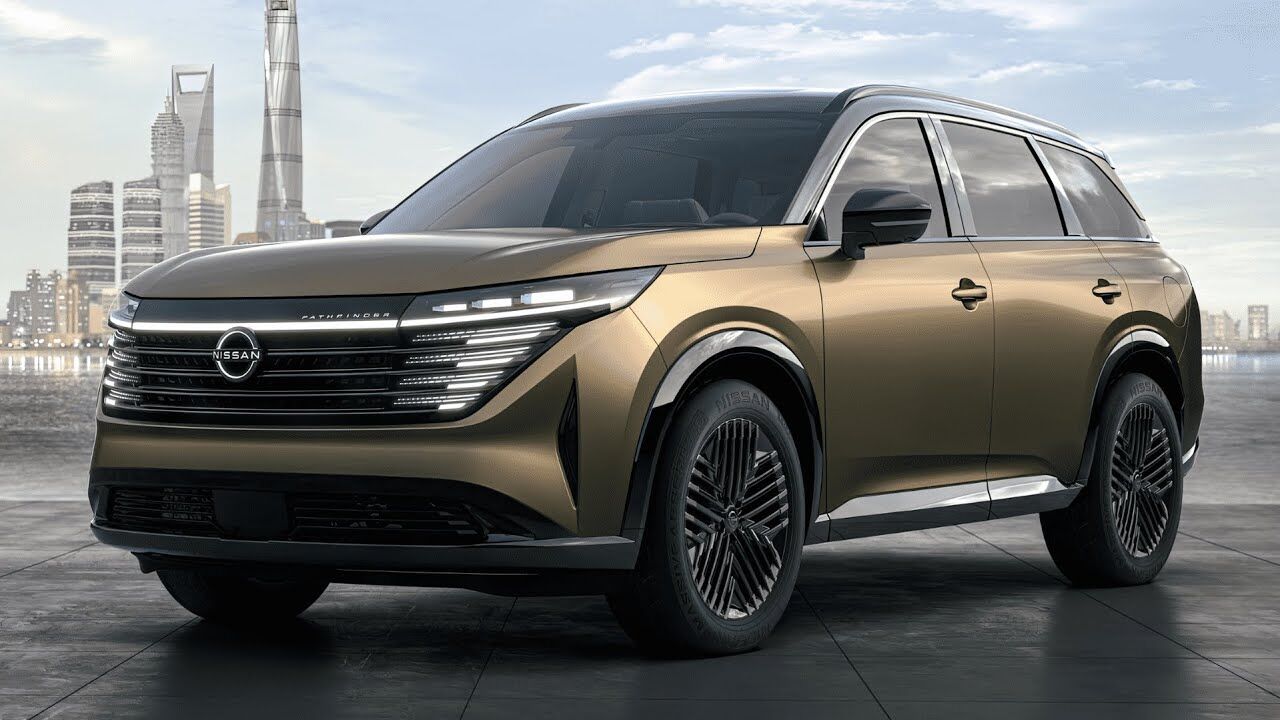Passenger comfort is a top priority for many people when purchasing an SUV. These spacious vehicles provide ample room for passengers to stretch out while still offering generous cargo capacity.
One of the key challenges when traveling with a full load of passengers in an SUV is maintaining a comfortable temperature for everyone, regardless of whether they’re seated in the front, middle, or third row.
This is where climate control becomes essential, making rear air conditioning a valuable feature. Giving rear-seat passengers the ability to adjust the temperature ensures that one row isn’t shivering while another is overheating.
Here are 10 SUVs with rear air conditioning that help ensure everyone stays cool and comfortable.
1. Subaru Ascent
The Subaru Ascent is a brand-new three-row SUV designed to accommodate up to eight passengers. It features standard all-wheel drive and offers 8.7 inches of ground clearance, making it well-suited for off-road adventures.
Additionally, it includes standard active torque vectoring and X-Mode with hill descent control to enhance performance in challenging driving conditions.
Passenger comfort is a priority, with convenient amenities such as 19 cupholders, dual USB ports in the second row, and three-zone automatic climate control. The base model of the Ascent starts at $31,995, while the highest trim level is priced at $44,695.
I was eager to spend a full year with Subaru’s largest crossover, the three-row Ascent, which shares the same new global platform as the rest of Subaru’s strong lineup. I had previously been the first journalist in North America to drive a prototype of this eight-passenger vehicle during its development.
I spent a day driving it along a winding route in Michigan, impressed by its ride quality that allowed me to increase my speed as I grew more confident in its handling. My impressions were further confirmed when I drove a Toyota Highlander on the same loop, where I had to reduce my speed to keep it on the road and minimize body roll.
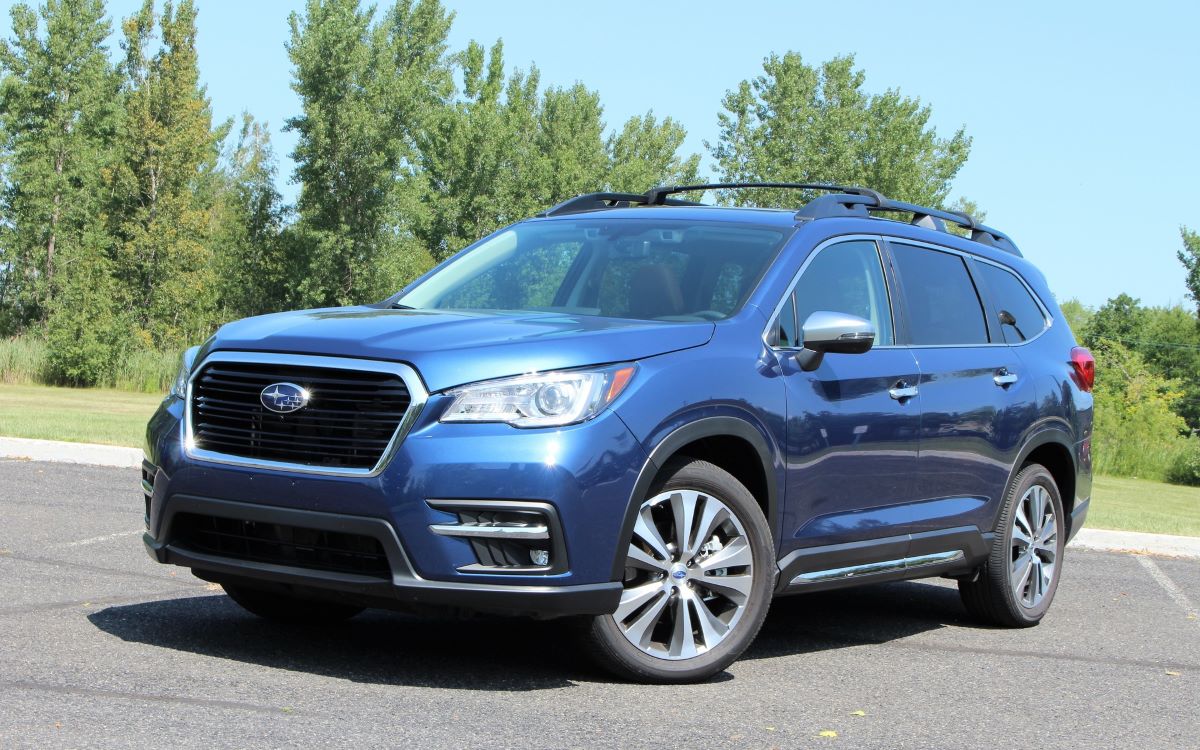
The initial Ascent I drove was a prototype, heavily camouflaged inside and out, with cutouts for essential controls like the starter button, gearshift, and key stalks required for driving.
Our long-term Ascent, however, had no such limitations. We took possession of a 2019 Ascent Limited on October 24, 2018, with only 15 miles on the odometer. The vehicle left us on a gloomy Monday in March after almost 17 months and 22,526 miles. Yes, we can do the math—that is more than a year-long loan.
However, the vehicle experienced a remarkable number of issues and spent an extended period at the dealership. This led to a rather unfortunate experience with a potentially solid vehicle that had an incredible series of problems, which were made worse by inadequate dealership service.
The Ascent’s first impression, however, was promising. It arrived as a Limited model in Cinnamon Brown Pearl, with a cream and black interior, and came equipped with supportive, heated, perforated leather seats, which were great for long drives.
The Ascent was the first Subaru to feature the new 2.4-liter direct-injection turbocharged flat-four engine. With 260 horsepower and 277 lb-ft of torque, it provided sufficient power for this larger SUV, completing the quarter-mile in 15.2 seconds—outpacing the Volkswagen Atlas and Toyota Highlander, both with V-6 engines.
The continuously variable transmission (CVT) mimics eight gear shifts, which many wouldn’t even notice as a CVT. Standard paddles allowed for manual downshifting to aid engine braking, and they worked effectively on a long, hilly stretch in northern Michigan.
Thanks to its low center of gravity, the Ascent was easy to get in and out of, and it felt stable with minimal body roll. The four-corner independent suspension proved it could handle the rough, uneven roads of Michigan without difficulty.
Our seven-passenger model featured captain’s chairs in the second row. (With a bench seat, it accommodates eight passengers.) The interior is roomy and offers ample space for passengers and their belongings.
All seats are adjustable, with the second-row seats easily sliding forward and backward. Grab handles located on top of the captain’s chairs made accessing the third row a breeze. The base price for our Limited model was $39,970, which is competitive within the segment.
We added a $2,950 option package to upgrade the audio system to a Harman Kardon setup, included a moonroof with sunshade, a navigation system, and a cargo area cover that conveniently stows under the load floor. Additionally, we purchased all-weather floor liners for $132.
2. Dodge Durango
The Dodge Durango is a three-row SUV that can accommodate up to eight passengers, or seven if you choose the second-row captain’s chairs instead of the standard bench seat.
With five available trims starting at $29,995, it presents an affordable option for families. At the top of the range is the powerful Durango SRT, equipped with a 475-hp 6.4-liter V8 engine.
This high-performance trim of the Durango achieves a 0-60 mph time of just 4.4 seconds, showing that needing a capable, full-size SUV doesn’t mean you have to sacrifice fun.
All Durango models come standard with three-zone automatic temperature control, including rear-seat outlets and controls, ensuring comfort for everyone on board.
I was eager to spend a full year with Subaru’s largest crossover, the three-row Ascent, which shares the same new global platform as the rest of Subaru’s strong lineup.
I had previously been the first journalist in North America to drive a prototype of this eight-passenger vehicle during its development. I spent a day driving it along a winding route in Michigan, impressed by its ride quality that allowed me to increase my speed as I grew more confident in its handling.
My impressions were further confirmed when I drove a Toyota Highlander on the same loop, where I had to reduce my speed to keep it on the road and minimize body roll. The initial Ascent I drove was a prototype, heavily camouflaged inside and out, with cutouts for essential controls like the starter button, gearshift, and key stalks required for driving.
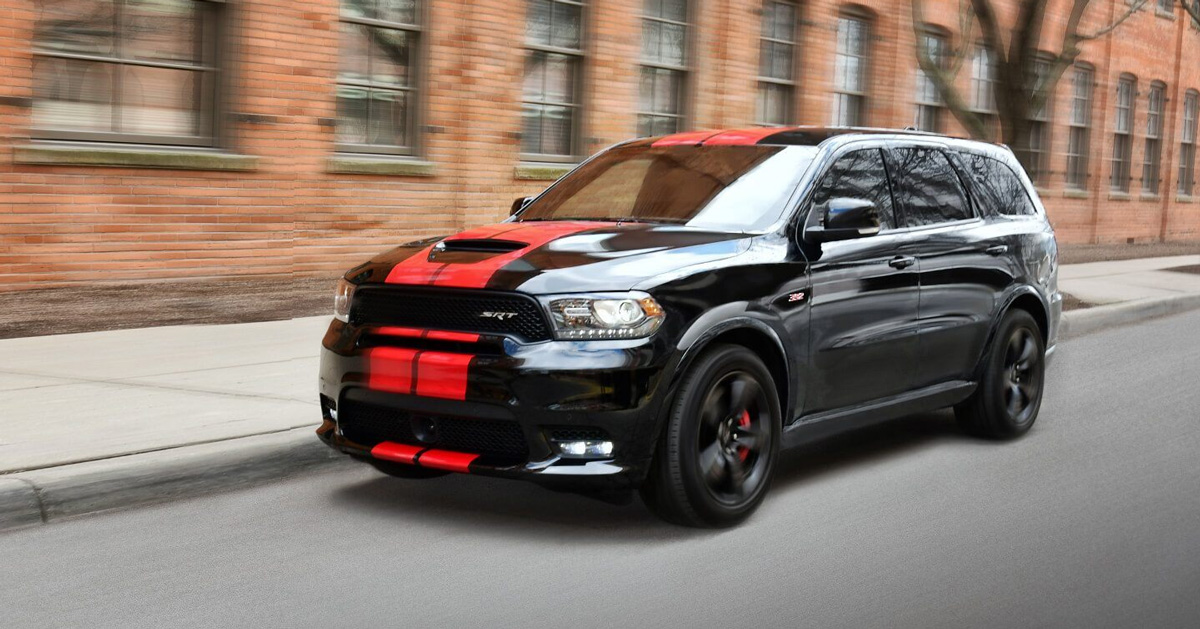
Our long-term Ascent, however, had no such limitations. We took possession of a 2019 Ascent Limited on October 24, 2018, with only 15 miles on the odometer.
The vehicle left us on a gloomy Monday in March after almost 17 months and 22,526 miles. Yes, we can do the math—that is more than a year-long loan. However, the vehicle experienced a remarkable number of issues and spent an extended period at the dealership.
This led to a rather unfortunate experience with a potentially solid vehicle that had an incredible series of problems, which were made worse by inadequate dealership service.
Corporate Subaru acknowledged that the service did not meet policy deadlines for completion. Not coincidentally, this experience occurred alongside news reports of Subaru’s rapid growth causing productivity and quality control issues.
The Ascent’s first impression, however, was promising. It arrived as a Limited model in Cinnamon Brown Pearl, with a cream and black interior, and came equipped with supportive, heated, perforated leather seats, which were great for long drives.
The Ascent was the first Subaru to feature the new 2.4-liter direct-injection turbocharged flat-four engine. With 260 horsepower and 277 lb-ft of torque, it provided sufficient power for this larger SUV, completing the quarter-mile in 15.2 seconds—outpacing the Volkswagen Atlas and Toyota Highlander, both with V-6 engines.
The continuously variable transmission (CVT) mimics eight gear shifts, which many wouldn’t even notice as a CVT. Standard paddles allowed for manual downshifting to aid engine braking, and they worked effectively on a long, hilly stretch in northern Michigan.
Thanks to its low center of gravity, the Ascent was easy to get in and out of, and it felt stable with minimal body roll. The four-corner independent suspension proved it could handle the rough, uneven roads of Michigan without difficulty.
Our seven-passenger model featured captain’s chairs in the second row. (With a bench seat, it accommodates eight passengers.) The interior is roomy and offers ample space for passengers and their belongings.
All seats are adjustable, with the second-row seats easily sliding forward and backward. Grab handles located on top of the captain’s chairs made accessing the third row a breeze. The base price for our Limited model was $39,970, which is competitive within the segment.
We added a $2,950 option package to upgrade the audio system to a Harman Kardon setup, included a moonroof with sunshade, a navigation system, and a cargo area cover that conveniently stows under the load floor. Additionally, we purchased all-weather floor liners for $132.
3. Mazda CX-9
The Mazda CX-9 is a premium option featuring three rows of seating with capacity for up to seven passengers. The third row accommodates two passengers, unlike larger SUVs that can fit three, and the middle row is equipped exclusively with a 60/40 split-folding bench seat.
Pricing for the base model begins at $32,280, and the lineup includes four available trims with the option of front-wheel or all-wheel drive.
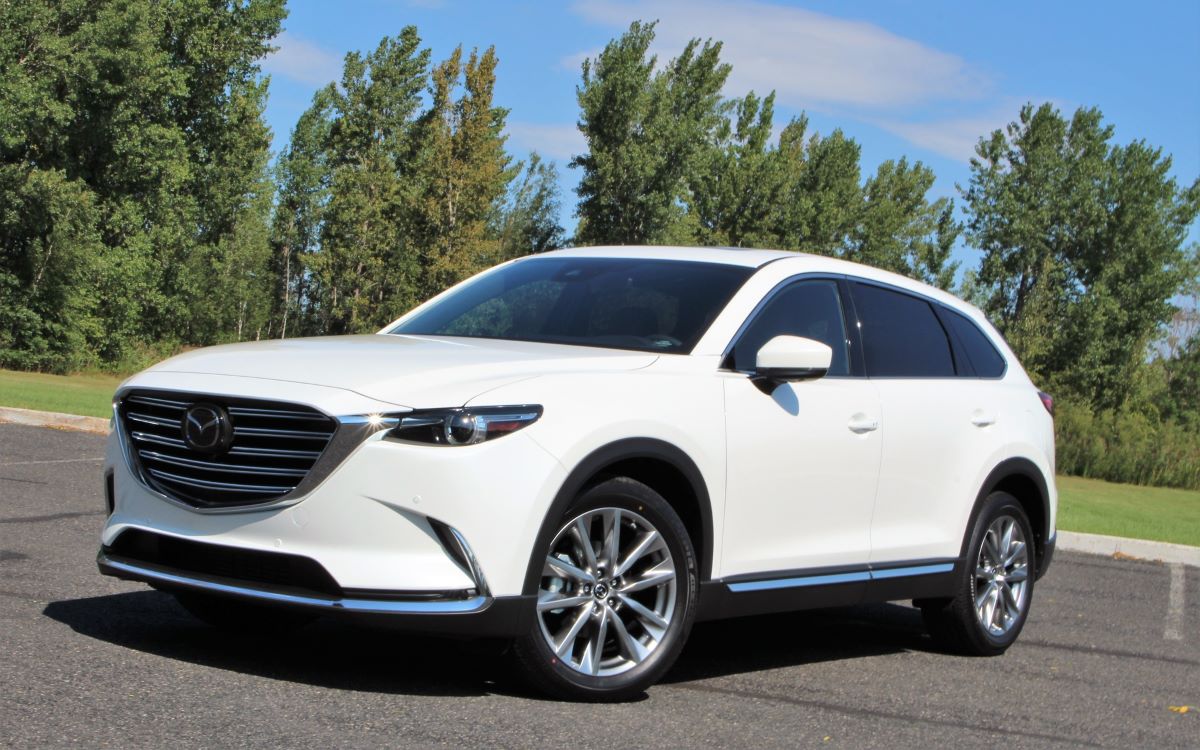
Even in its base trim, this vehicle comes well-appointed, offering standard features such as a leather-wrapped steering wheel and shift knob, a 7-inch infotainment screen, blind spot monitoring, and rear cross-traffic alert. Three-zone automatic climate control is also included as a standard feature across the entire CX-9 lineup.
Also Read: Top Engines That Outlived the Brands That Made Them
4. Buick Envision
The Buick Envision is a two-row SUV designed to seat five passengers. As part of a luxury brand, it carries a higher starting price, beginning at $33,190 for the base model.
This entry-level trim includes a variety of standard features such as a hands-free power liftgate, rear park assist, heated driver and front passenger seats, and an 8-way power driver’s seat.
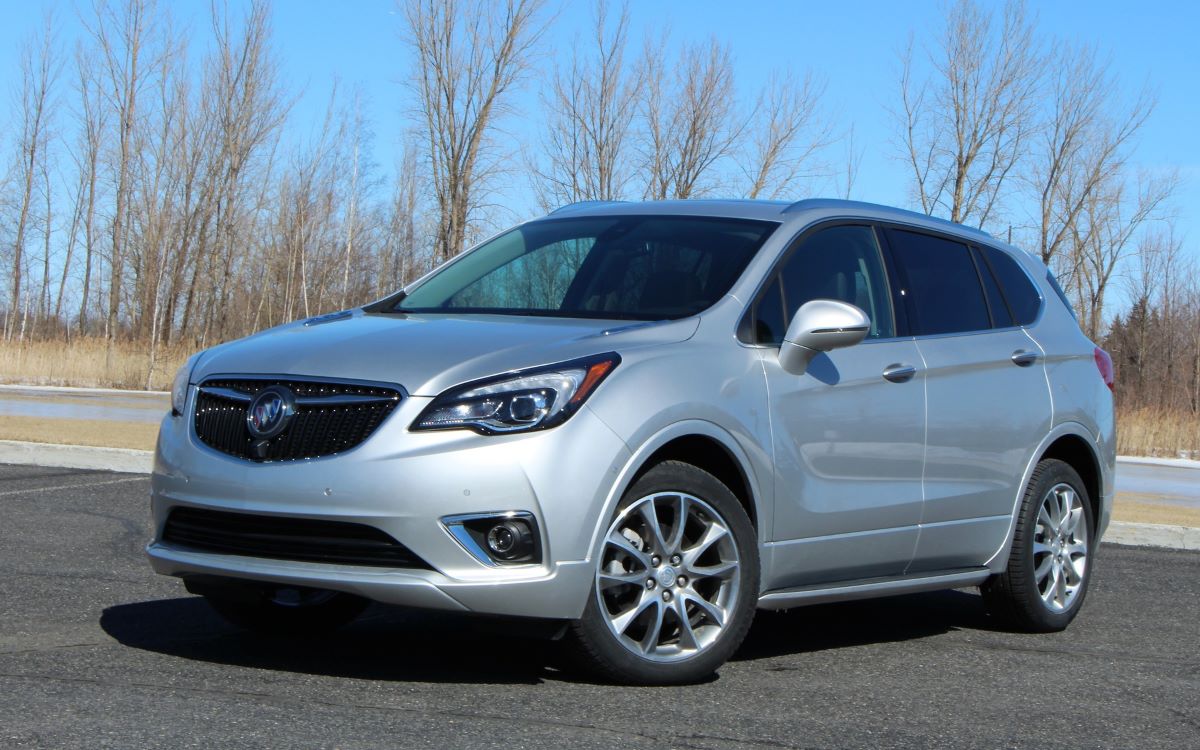
Tri-zone automatic climate control, with controls located on the back of the center console, is also available, but it is not included on the base trim. It becomes standard starting with the Essence trim, which begins at $36,995 for front-wheel drive or $38,745 for all-wheel drive.
From that point on, tri-zone climate control remains a standard feature throughout the remainder of the Envision lineup.
5. GMC Yukon
The GMC Yukon is a full-size SUV that offers a selection of powerful engines, the option of rear-wheel or four-wheel drive, and comes in three available trims starting at $49,600.
This places it at a higher price point compared to many other three-row SUVs, but the Yukon delivers outstanding passenger and cargo space, along with impressive capabilities, including the ability to tow up to 8,500 pounds when properly equipped.
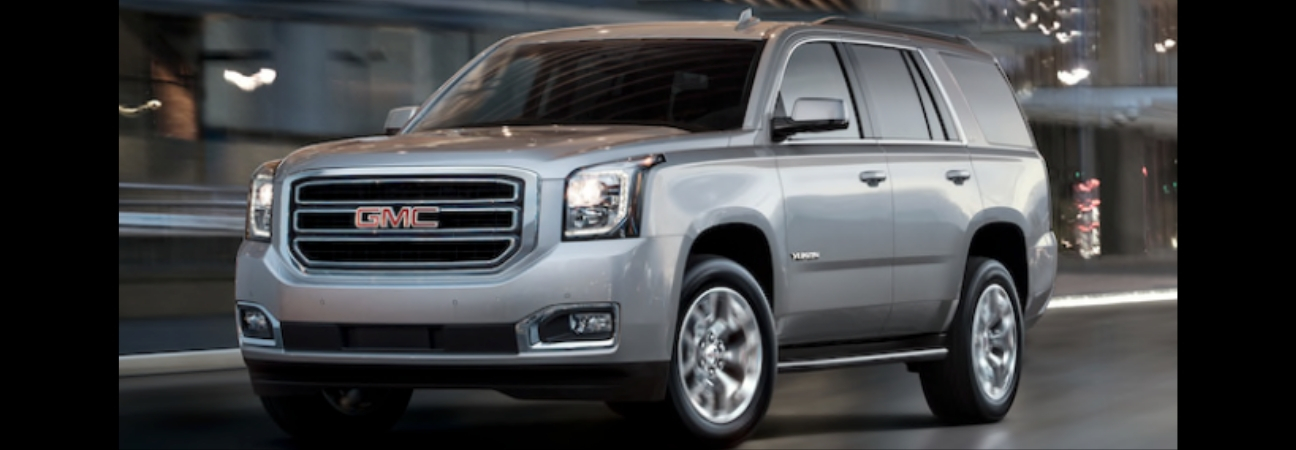
This premium SUV includes a host of standard features such as an 8-inch infotainment touchscreen, a 9-speaker Bose audio system, 4G LTE Wi-Fi hotspot capability, and remote start.
Additional features include a leather-wrapped steering wheel, black assist steps, heated power outside mirrors, and tri-zone automatic climate control to help maintain a consistent and comfortable temperature throughout the cabin.
6. Chevrolet Traverse
The Chevrolet Traverse is a three-row SUV that can accommodate up to eight passengers. It is available in five trims with the option of front-wheel or all-wheel drive, and pricing begins at $30,925.
At the top of the range is the upscale High Country trim, which starts at $54,395 and comes equipped with premium features such as heated and ventilated front seats, heated rear outboard seats, wireless charging, and a leather-wrapped steering wheel.
Tri-zone automatic climate control is standard across all trims, including the base model. This system allows rear passengers to adjust the temperature independently from those in the front seats.
Additionally, sensors placed throughout the vehicle help monitor and regulate the interior climate to maintain the selected settings more accurately.
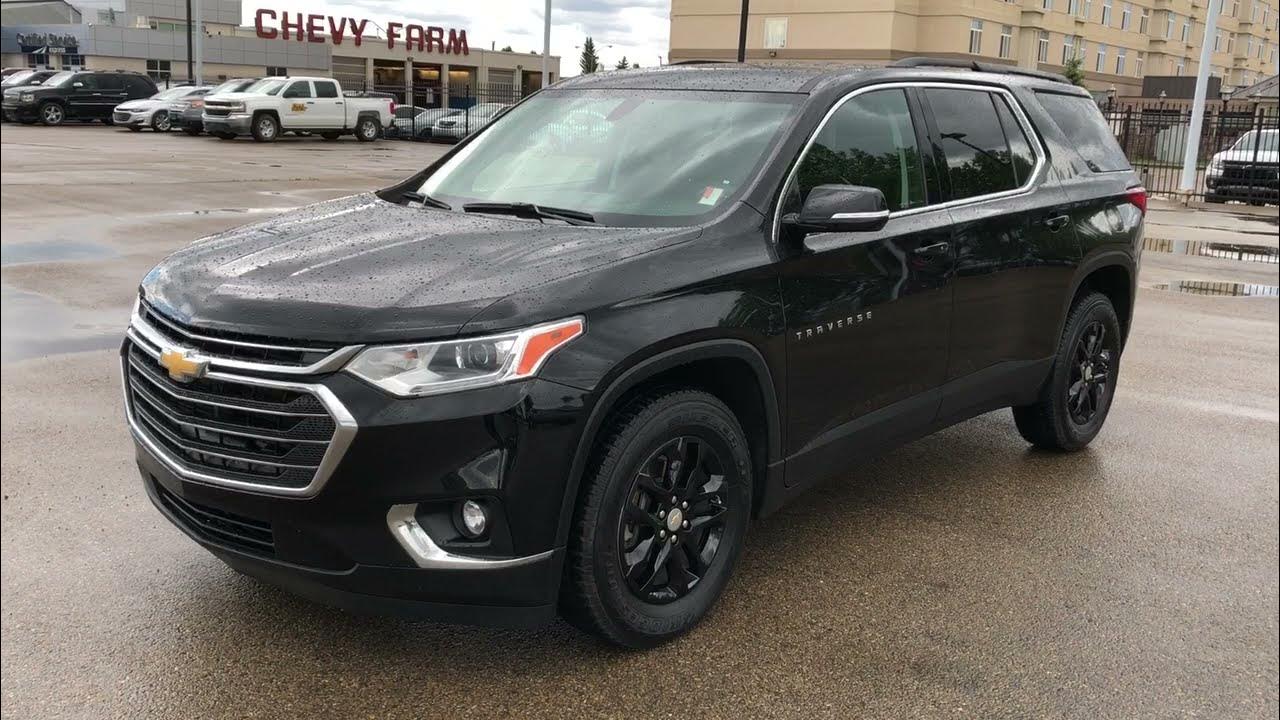
In addition to his writing, he serves as a juror for the North American Car, Truck and Utility Vehicle of the Year Awards. The 2019 Mazda CX-9 is one of the top-rated vehicles on Edmunds, thanks to a combination of standout styling and engaging performance.
On a visual level, the CX-9 brings a bold design that sets it apart from other midsize SUVs, many of which tend to blend in. The upscale appeal continues inside, especially with the top-tier Signature trim that features a cabin quality on par with some luxury brands.
It’s not just about appearances, though—the CX-9 also drives exceptionally well. Its handling is confident and leans toward sporty, yet it maintains comfort even over rough roads. Highway cruising is especially quiet and composed, making long trips more pleasant.
For 2019, Mazda added a few key updates to the CX-9. These include the addition of Android Auto and Apple CarPlay, a newly retuned suspension that improves ride comfort, and a new surround-view parking camera system. The vehicle remains part of the second CX-9 generation that was introduced for the 2016 model year.
Despite its many strengths, the CX-9 does have some drawbacks. Its cargo capacity lags behind many competitors in the segment, and the third-row seats don’t offer as much room as you’d find in rivals.
Shoppers needing maximum space for passengers or gear might find the CX-9 limiting in those areas. That said, for the typical crossover SUV buyer, the space it offers will still be more than adequate.
Overall, the CX-9’s blend of style, performance, and premium interior finishes make it a standout in the crowded midsize SUV class. That coverage explored everything from real-world fuel economy to seat comfort.
Editors found the CX-9 to be one of the most enjoyable and stylish SUVs available, although its limited cargo space was noted. The 2019 model builds on that foundation with more standard features and an improved suspension, and since it’s still the same generation, much of what was learned from the 2016 version remains relevant today.
Also Read: 5 Cars With Legendary Brakes and 5 With Infamous Stopping Power
7. Honda Passport
The Honda Passport is a brand-new SUV featuring two rows of seating and accommodating up to five passengers. It is available with either front-wheel or all-wheel drive and comes in a selection of four trims, with the base Sport model starting at $31,990.
At the top of the lineup is the Elite trim, which includes standard all-wheel drive and is priced at $43,690.
Every trim in the Passport lineup comes equipped with Honda Sensing, which includes features like forward collision warning, lane departure warning, road departure mitigation, and collision mitigation braking.
Additional amenities include a tilt and telescopic steering column, power liftgate lock, rear-seat heater ducts, and tri-zone automatic climate control with humidity control and air filtration.
It’s interesting that Honda chose to bring back the Passport name, especially considering its past doesn’t carry much positive recognition. The original Honda Passport was essentially a rebadged Isuzu SUV from the 1990s that didn’t last a full decade before being discontinued.

Perhaps Honda assumes enough time has passed that few will remember the old model, or maybe it simply understands that Americans have a soft spot for comeback stories.
The all-new Passport is, at its core, a shorter and taller version of the Honda Pilot—a smart move given the Pilot remains one of the top-rated three-row crossovers available.
By trimming the length, the Passport forgoes a third-row seat in favor of increased space for second-row passengers. Honda also boosted its off-road capability by giving it more ground clearance and improving its approach and departure angles.
Under the hood, the Passport shares the same V6 engine and nine-speed automatic transmission as the Pilot. This engine delivers strong performance and 5,000 pounds of towing capacity, making it practical for hauling and everyday driving.
While the Pilot’s transmission has faced criticism in the past for its clunky shifting, Honda appears to have refined the setup in the Passport, resolving many of those earlier complaints.
The 2019 Honda Passport enters a growing segment of two-row midsize SUVs, facing competition from models like the Ford Edge and the newly revived Chevrolet Blazer. Within this group, the Passport distinguishes itself with generous interior space, strong feature content, and well-rounded versatility.
Whether you’re looking for a vehicle that can handle weekend getaways or simply want something comfortable and capable for your daily drive, the 2019 Passport stands out as a strong contender.
8. Nissan Pathfinder
The Nissan Pathfinder is a three-row SUV that offers seating for up to seven passengers. It comes in a choice of front-wheel or four-wheel drive and is available in four different trims.
Pricing begins at $31,430 for the base Pathfinder S, while the top-tier Platinum trim with four-wheel drive is priced at $44,460. Standard equipment includes cruise control, 10 cupholders, four USB ports, and a rear door alert system to help ensure nothing is forgotten in the back seat.
Heated and ventilated front seats are included on the higher trims, along with heated outboard seats in the second row.
Tri-zone automatic climate control is a standard feature across the entire Pathfinder lineup, meaning you don’t need to upgrade to a higher trim to enjoy this convenience.
If you were to take all the typical traits found in today’s three-row crossovers and blend them into one unremarkable package, the result would closely resemble the 2019 Nissan Pathfinder.
While the Pathfinder name recalls a rugged, off-road-ready SUV lineage—the original model being a tough, body-on-frame vehicle with four-wheel drive—the current iteration is a far cry from those roots. Instead, it serves as a capable and comfortable seven-passenger family hauler with minimal off-road ambitions.
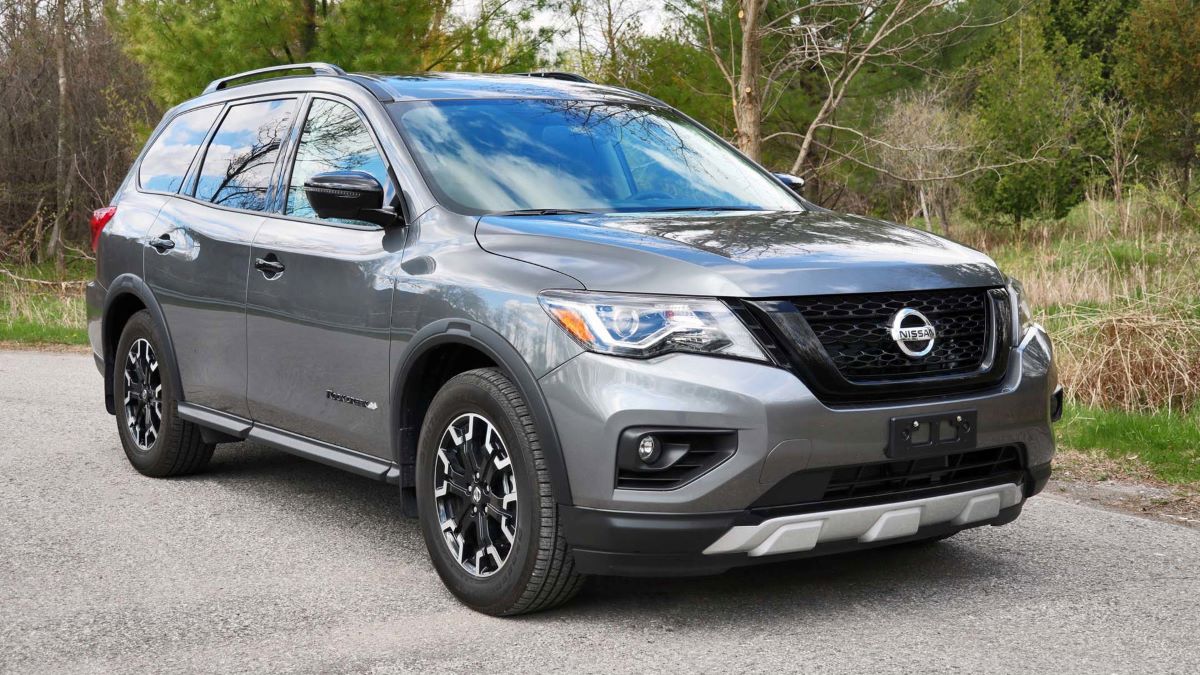
It delivers a respectable value proposition and a versatile interior, but its appeal is hindered by outdated technology and lackluster driving dynamics. As a result, the aging Pathfinder doesn’t stand out in the crowded midsize SUV field and tends to fade into the background.
Nissan has introduced a handful of updates to the Pathfinder’s feature list. Rear parking sensors and two type-C USB ports are now standard across all trims.
The SV model now comes equipped with adaptive cruise control, blind-spot monitoring, and rear cross-traffic alert. Additionally, SL and Platinum trims receive LED headlamps, and a new color—Mocha Almond Pearl—has been added to the exterior paint options.
Pricing for the 2019 Nissan Pathfinder ranges from $32,625 for the base S trim to $43,965 for the fully loaded Platinum model. Even at the entry level,
Nissan includes a decent array of standard features, making the S a solid value. However, the SV trim stands out as the best choice, offering key additions such as keyless entry, push-button start with remote start, an eight-way power-adjustable driver’s seat, automatic headlights, adaptive cruise control, and blind-spot monitoring.
To enhance the SV further, we recommend adding both optional packages: the All-Weather package, which includes heated front seats, a heated steering wheel, and heated side mirrors, and the Tech package, which adds built-in navigation, a trailer-hitch receiver with a towing harness, SiriusXM satellite radio, and NissanConnect telematics services.
9. Kia Sorento
The Kia Sorento is a three-row SUV that can accommodate up to seven passengers. It is offered in six different trims, with pricing ranging from $26,290 to $46,490.
This positions the Sorento as one of the more budget-friendly options on our list; however, rear air conditioning is not a standard feature. It first becomes available as an option on the mid-range LX V6 trim.
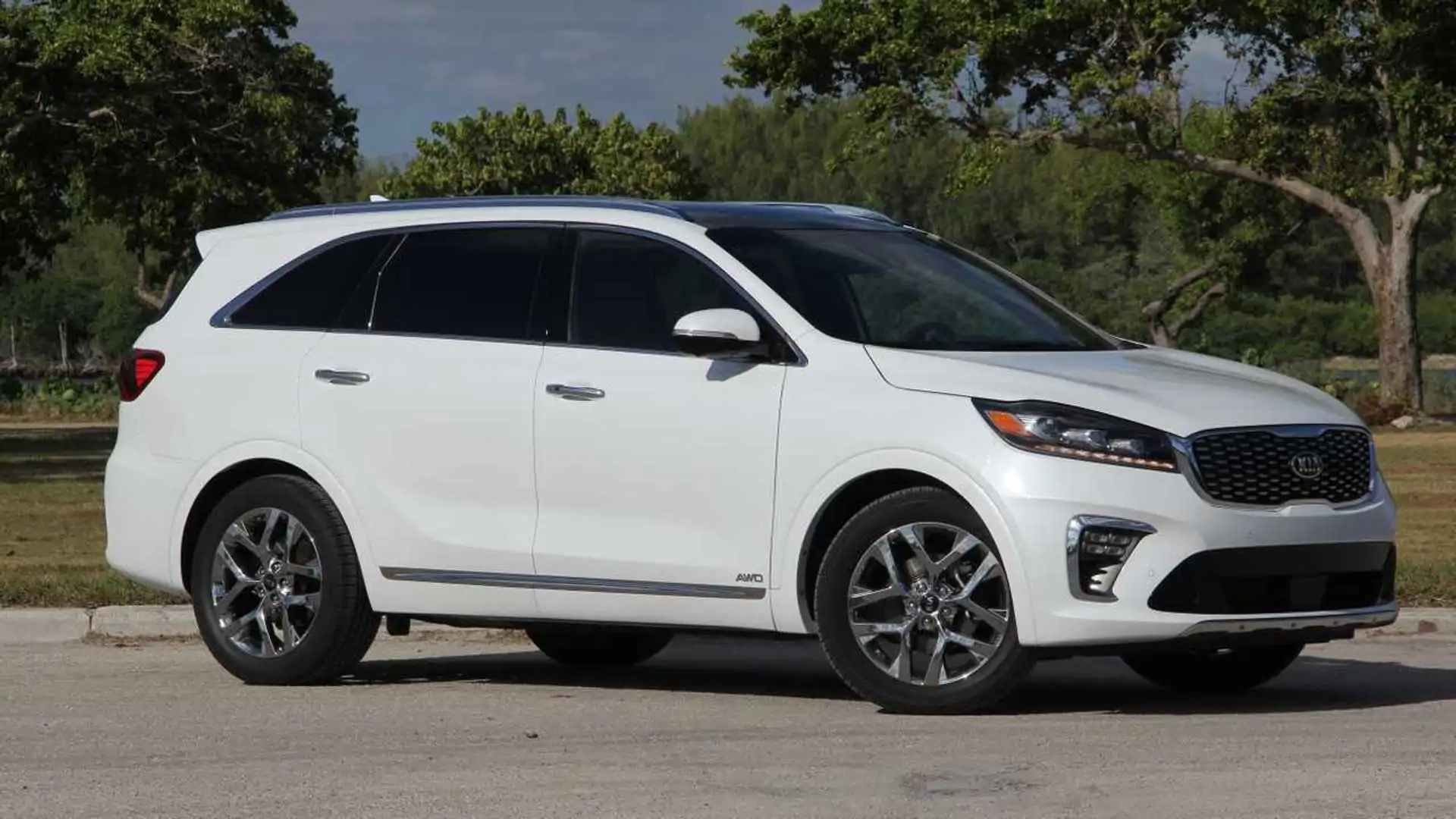
Third-row air conditioning with controls becomes standard starting with the EX V6, which has a starting price of $35,590 meaning you’ll need to spend nearly $10,000 more to ensure this feature is included.
In addition to that, the EX V6 comes well-equipped with features such as leather seats, a 10-way power driver’s seat, and heated front seats, making it a robust offering in the lineup.
If you’re in the market for a capable, convenient, and comfortable three-row crossover, the Kia Sorento stands out as a reliable option. But choosing the Sorento is only the beginning—Kia offers multiple configurations tailored to different needs.
With seating for seven, two available engines, and both front- and all-wheel-drive options, there’s a Sorento for nearly every driver. Each model comes well-equipped, and the range-topping SX Limited brings near-luxury levels of refinement with a features list that could rival the wingspan of Giannis Antetokounmpo.
When you factor in Kia’s exceptional warranty coverage, the Sorento becomes an even more appealing proposition for long-term ownership without the typical concerns.
For 2019, the Sorento receives a modest exterior refresh, but more substantial updates appear under the hood and inside the cabin.
Kia has dropped the previously available turbocharged four-cylinder engine, leaving a choice between the base non-turbo four-cylinder and a refined V-6. The base engine is paired with a six-speed automatic, while the V-6 now comes with an upgraded eight-speed automatic transmission.
The Sorento also becomes exclusively a seven-passenger vehicle, with the third-row seat now standard across all trims. New available features for 2019 include lane-keeping assist, a driver-attention monitor, wireless smartphone charging, and a premium Harman/Kardon audio system.
Pricing for the 2019 Kia Sorento starts at $27,335 for the base L trim and climbs to $45,735 for the fully loaded SX Limited, depending on the selected options.
Our recommended pick is the SX trim, which strikes a strong balance between value and premium amenities. The SX comes standard with the 3.3-liter V-6 engine, though all-wheel drive remains a $1,800 option.
Highlights of the SX’s standard equipment include a panoramic sunroof, an 8.0-inch touchscreen infotainment system with navigation, leather-trimmed seats with power-adjustable and heated front seats, and a 10-speaker Harman/Kardon sound system.
From a performance standpoint, the Sorento has both strengths and weaknesses. On the plus side, the optional V-6 engine delivers smooth acceleration and a comfortable ride, and it handles broken pavement with ease.
On the downside, the base four-cylinder feels underpowered for a vehicle of this size, and the Sorento’s steering lacks responsiveness.
While it can’t quite match the driving engagement of the Mazda CX-9 and leans more than we’d like in corners, these shortcomings mostly appear when pushing it on winding roads. For everyday driving, the Sorento feels refined and manageable—certainly not like a lumbering school bus.
It also includes three selectable drive modes (Normal, Eco, and Sport), which tweak throttle response, steering feel, and transmission behavior, although none of them drastically alter the Sorento’s laid-back driving nature.
10. Ford Expedition
The Ford Expedition is a large, full-size SUV that can accommodate up to eight passengers and offers an impressive amount of cargo space.
Behind the third row, there is up to 20.9 cubic feet of cargo capacity, which increases to 63.6 cubic feet behind the second row, and 104.6 cubic feet behind the first row.
If more space is needed, the Expedition is also capable of towing up to 9,300 pounds when properly equipped.The model lineup includes three trims, with the base XLT starting at $52,130 and the Platinum trim reaching a price of $73,365.
While the Expedition’s pricing may be on the higher side, it delivers a strong combination of towing capability and passenger comfort in all trims. Additionally, every trim in the range comes equipped with standard rear climate control.
The Expedition and its extended sibling, the Expedition Max, represent the high-tech, high-capacity essence of today’s full-size SUV class, delivering exceptional towing capabilities and minivan-level passenger space. Both versions make use of aluminum-heavy construction, which allows them to be larger yet lighter than their previous-generation counterparts.
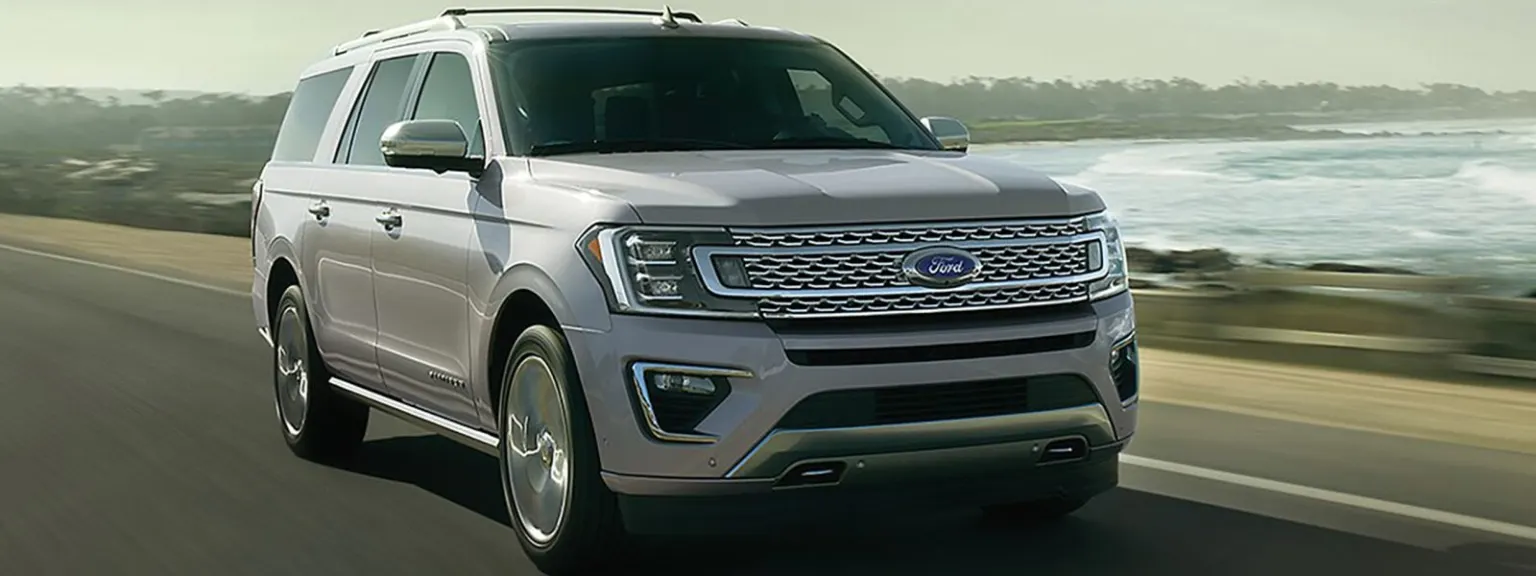
Powering them is Ford’s twin-turbocharged V-6 engine, mated to a 10-speed automatic transmission and available with either rear- or all-wheel drive. Among the lineup, the Platinum trim stands out for its upscale styling and an impressive array of standard features
. The Expedition offers a smooth, comfortable ride and an incredibly roomy interior, which are major advantages. However, its driving dynamics suffer from awkward handling, and some of the interior materials fall short of expectations.
Additionally, while the upper trims are priced on par with luxury-brand alternatives, they don’t quite deliver the premium finish and craftsmanship to match. Despite this, the Expedition hits all the key marks expected of a modern full-size SUV—it simply doesn’t outperform more affordable rivals.
For 2019, changes to the Expedition are minimal, with a few interior updates, added standard features, and the introduction of a new option package. The Special Edition package brings black 22-inch wheels, a surround-view camera system, LED headlights and fog lights, various cargo accessories, an upgraded self-parking system, and equipment for heavy-duty towing.
The base XLT trim receives updated seat materials, and the formerly dual-zone climate control is now a tri-zone system. Ford has replaced Sync Connect with FordPass Connect, giving drivers access to real-time traffic updates and a 4G LTE mobile hotspot. The top-tier Platinum model now comes standard with bright roof-rack rails and matching end caps.

